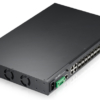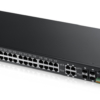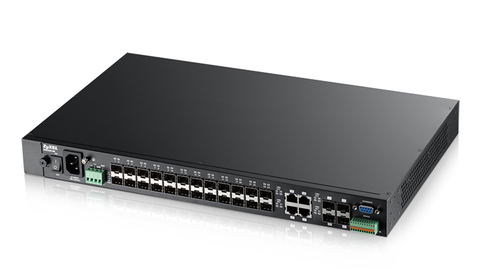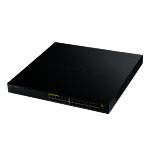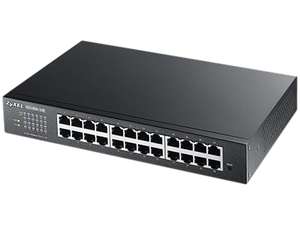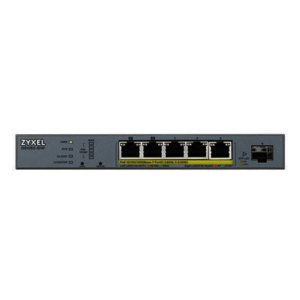₹69,615.00
Switch type : Managed
Switch layer : L2
Web-based management : Yes
Basic switching RJ-45 Ethernet ports type : Gigabit Ethernet (10/100/1000)
Installed SFP modules quantity : 24
Combo SFP ports quantity : 4
10G support : No
Flow control support : Yes
Link aggregation : Yes
Broadcast storm control : Yes
Spanning tree protocol : Yes
Switching capacity : 56 Gbit/s
Throughput : 41.67 Mpps
Address table size : 16000 entries
Jumbo frames support : Yes
Jumbo frames : 9000
IGMP snooping : Yes
SSH/SSL support : Yes
BPDU filtering/protection : Yes
Rack mounting : Yes
Product color : Black
AC input voltage : 100 – 240 V
Power supply PoE : No
Operating temperature (T-T) : 0 – 50 °C
Storage temperature (T-T) : -40 – 70 °C
Operating relative humidity (H-H) : 10 – 95%
Storage humidity : 5 – 95%
Width : 440 mm
Depth : 270 mm
Height : 44 mm
Weight : 3.72 kg
GST @18% is applicable.
Description
To help service providers deliver cost-effective Ethernet services, the MGS3520 Series GbE L2 Managed Switch was designed specifically for them. Service providers can easily extend network topologies using the high-performance hardware platform, enabling robust security, QoS, and management features to help customers meet Metro Ethernet service requirements distinct.
The ability to control traffic flow and set traffic policy is more important than ever for service providers to win and retain customers, as consistent quality of service and reliable connection capacity in a converged network are essential. In terms of classification, the Differentiated Services Code Point (DSCP) field and the 802.1p class of service (CoS) field are identified in order to assess the priority of incoming packets.
The MGS3520 Series provides wire-speed flow control that classifies and prioritizes incoming packets according to predefined QoS policies that meet service provider requirements. Rules based on IP, MAC, VLAN ID, or TCP/UDP port numbers can be used as specific classification and reclassification criteria.
The MGS3520 series has eight priority queues per port for different types of traffic for bandwidth management. This allows service providers to set policy-based throughput limits that take full advantage of limited network resources and ensure the best performance.
